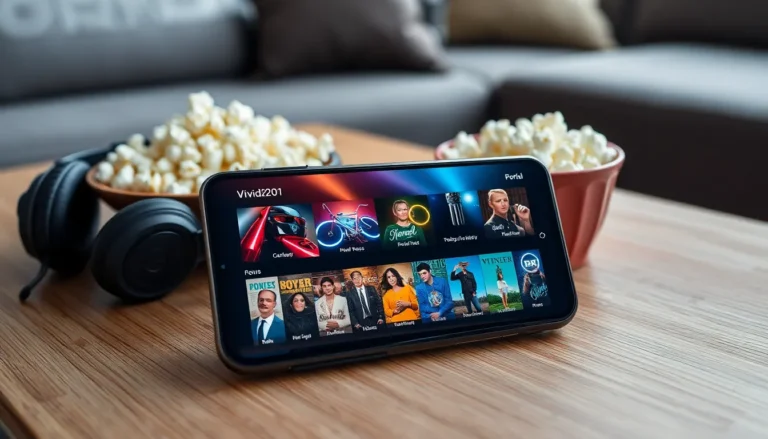The Internet of Things (IoT) promises a world where everything is smart—from fridges that remind you to buy milk to thermostats that know your temperature preferences better than your mother. But before diving headfirst into this tech utopia, let’s pump the brakes and take a closer look at some of the not-so-glamorous sides of IoT.
Sure, it sounds great to have a coffee maker that brews your morning cup just by sensing your groggy presence. But what happens when that same coffee maker gets hacked, and instead of a latte, it serves up a scalding hot mess? With convenience comes a host of challenges, from privacy concerns to security risks. Let’s explore the pitfalls of this interconnected world that might just make you think twice about your smart toaster.
Table of Contents
ToggleOverview of IoT
The Internet of Things (IoT) connects various devices to the internet, enabling communication and data exchange. These smart devices include home appliances, wearables, and industrial equipment. Data collection occurs in real-time, allowing for enhanced functionality and convenience.
Security vulnerabilities present significant challenges in the IoT landscape. Hackers often exploit weak security measures to gain unauthorized access. As devices become interconnected, the potential for widespread damage from a single breach increases.
Privacy issues arise due to the extensive data collection performed by IoT devices. Manufacturers might collect personal information without user consent, leading to unauthorized data sharing. Individual privacy can erode, as previously private behaviors become accessible to third parties.
Device interdependence also creates operational risks. If one device malfunctions, the entire system may face disruptions. Companies and consumers depend on continuous software updates to maintain functionality, which can prove inadequate.
Energy consumption is another concern within IoT ecosystems. Many devices require constant power, contributing to higher energy bills and environmental impact. As the number of connected devices grows, so does the demand for electricity, straining resources.
Legal and regulatory frameworks lag behind IoT technological advancements. Current laws often fail to address emerging privacy and security issues. This lack of regulation can leave users vulnerable to exploitation and misuse.
IoT offers remarkable benefits, but accompanying disadvantages must receive careful consideration. Security, privacy, energy consumption, and regulatory challenges merit attention. Awareness of these issues can guide informed choices while integrating IoT into daily life.
Common Disadvantages of Internet of Things

The Internet of Things (IoT) does present several disadvantages that users should consider carefully.
Security Risks
Security vulnerabilities pose a significant threat in the IoT landscape. Hackers can exploit weak security protocols, gaining unauthorized access to devices. Compromised devices may lead to data breaches, impacting not just individual users but also organizations. Devices often lack sufficient security updates, leaving systems exposed. Data spread across multiple devices increases the potential attack surface for cybercriminals. Thus, without proper safeguards in place, IoT systems can become prime targets for cyberattacks.
Privacy Concerns
Privacy issues present critical challenges for IoT users. Extensive data collection occurs through smart devices, often without informed consent. Individual habits and preferences can be tracked, leading to privacy invasions. Users may not realize how much data is shared with third parties, raising concerns about data ownership. Additionally, a lack of transparency in data usage fosters distrust in technology. Therefore, protecting privacy rights remains an ongoing challenge in the IoT ecosystem.
Dependence on Internet Connectivity
Dependence on reliable internet connectivity can disrupt IoT functionality. If a connection fails, devices may become non-operational, hindering daily tasks. Smart home systems, for instance, rely on constant connectivity to function properly. Loss of connection may also limit the availability of essential updates and security patches. Users face challenges with device performance during poor connectivity, impacting overall usability. Consequently, ensuring a stable internet connection is crucial for seamless IoT experiences.
Technical Challenges
The Internet of Things (IoT) presents several technical challenges that impact its efficiency and effectiveness.
Interoperability Issues
Devices often come from different manufacturers, resulting in interoperability challenges. Compatibility problems arise when various protocols and standards are used, hindering seamless communication. Users may face difficulties integrating new devices with existing systems. Smart home products can become isolated units instead of functioning within a cohesive ecosystem. When devices don’t communicate effectively, users experience frustration and inefficiencies. The lack of universal standards complicates the development of multi-device environments.
Scalability Problems
Scalability represents another significant technical challenge within IoT. As the number of connected devices grows, network management becomes increasingly complex. Handling large volumes of data generated by numerous devices strains existing infrastructure. Bandwidth limitations can lead to slower response times and decreased performance. Organizations may struggle with deploying and managing thousands of devices effectively. Ensuring consistent performance at scale requires robust systems and strategic planning to avoid operational bottlenecks.
Economic Impact
The economic implications of the Internet of Things (IoT) include both job displacement and increased costs. A deeper look reveals significant challenges in these areas.
Job Displacement
Automation driven by IoT technologies displaces various jobs across multiple sectors. Workers in manufacturing, transportation, and retail often face redundancy as machines and smart systems take over tasks. Several studies estimate that over 20% of current jobs may become obsolete due to automation within the next decade. Reskilling and upskilling become essential for the workforce to adapt to this shift. The challenge lies in transitioning workers to new roles that arise from this technological evolution.
Increased Costs
Increased costs present another critical challenge linked to IoT adoption. Organizations often face substantial expenses when integrating smart devices and systems. Maintenance and upgrading of these devices require ongoing financial investment. Additionally, businesses may incur costs related to cybersecurity measures to protect against potential breaches and vulnerabilities. Research indicates that companies can experience up to a 30% rise in operational expenses when implementing IoT solutions, making cost analysis vital. Consequently, stakeholders must assess potential returns to justify these investments.
The Internet of Things presents undeniable benefits but also carries significant drawbacks. Users must navigate the complexities of security vulnerabilities and privacy concerns that can arise from interconnected devices. The reliance on stable internet connectivity and the challenges of interoperability further complicate the user experience.
As the landscape of IoT continues to evolve the implications for jobs and economic costs cannot be overlooked. Awareness of these disadvantages is crucial for making informed decisions about adopting IoT technologies. Balancing the convenience of smart devices with caution can help users enjoy the advantages while mitigating potential risks.


